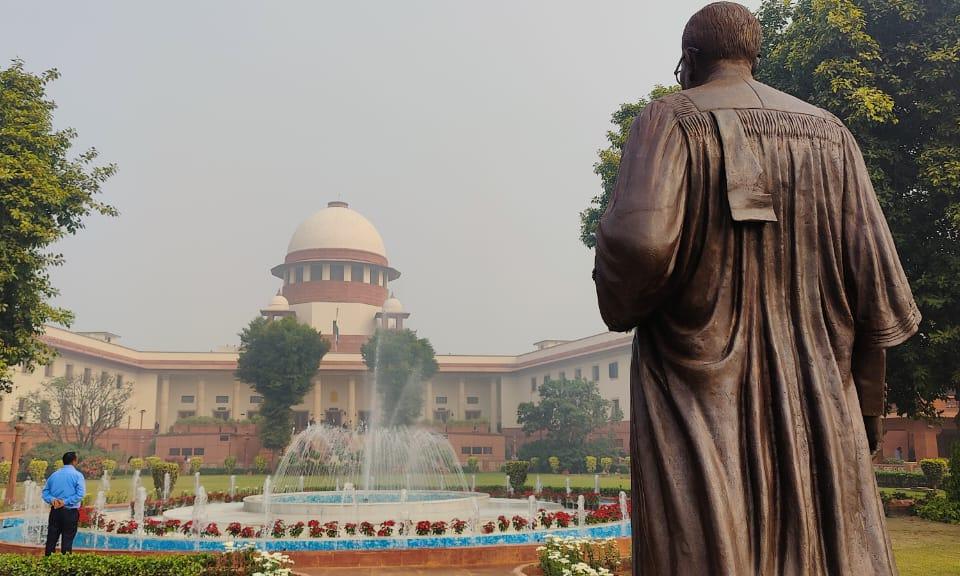SC Allows Sub-Divisions in SC, ST for Quota

New Delhi: In a landmark verdict, a seven-judge Constitution Bench of the Supreme Court on Thursday okayed sub-classification within the Scheduled Caste and Schedule Tribe communities to provide reservations in jobs and education for the more marginalised sub-sets.
The apex court verdict for quotas within the reserved categories sets the ball rolling for the Centre and state governments to divide their SC and ST lists based on relative deprivation among various castes in these categories and provide enhanced opportunities to the more marginalised sub-sections.
The verdict was passed by a bench led by Chief Justice of India D.Y. Chandrachud by 6-1 majority, with Justice Bela Trivedi dissenting. Six verdicts running into 565 pages overturned the 2004 judgment of a five-judge Constitution Bench in ‘E.V. Chinnaiah versus State of Andhra Pradesh’, which had held that sub-classification was not permissible.
The majority verdict upheld the Punjab Scheduled Caste and Backward Classes Act, 2006, and the Tamil Nadu Arunthathiyars Act, 2009.
The CJI said: “The state can sub-classify, inter alia, based on inadequate representation of certain castes. However, the state must establish that the inadequacy of representation of a caste/group is because of its backwardness,” it said.
The state will have to collect data on inadequacy of representation in government jobs because it is used as an indicator of backwardness, he said.
The CJI, in the judgment written for himself and Justice Manoj Misra, referred to historical evidence, which suggested that Scheduled Castes are not a homogeneous class. The CJI said sub-classification did not violate the principle of equality enshrined under Article 14 of the
Constitution. He added that there was nothing in Articles 15 and 16 which prevented the state from sub-classifying a caste.
The CJI said: “Historical and empirical evidence demonstrates that the SCs area socially heterogeneous class. Thus, the state in exercise of the power under Articles 15(4) and 16(4) can further classify the SCs if (a) there is a rational principle for differentiation; and (b) the rational principle has a nexus with the purpose of sub-classification.”
The majority verdict said the basis of sub-classification has to be justified by “quantifiable and demonstrable data by the states (that sub-classified castes are not adequately represented), which cannot act on its whims” for political expediency. Clarifying that the state cannot earmark 100 per cent reservation for a sub-class, the bench also held that the sub-classification will be amenable to judicial review.
The principal issue for adjudication by the bench was whether sub-classification of the Scheduled Castes for reservation is constitutionally permissible in the light of the E.V. Chinnaiah judgment.
The bench, also comprising Justices B.R. Gavai, Vikram Nath, Bela M. Trivedi, Pankaj Mithal, Manoj Misra and Satish Chandra Mishra, was hearing 23 petitions, including the lead one filed by the Punjab government challenging a 2010 verdict of the Punjab and Haryana High Court.
Overturning its 2004 judgment, the top court said members of SCs and STs are often unable to climb up the ladder due to the systemic discrimination faced by them.
Justice Gavai, in a separate verdict, said states must identify the creamy layer in SCs and STs and take them out of reservations.
In his concurring judgment, he said that it was the duty of the state to give preferential treatment to the more backward communities as only a few people within the category of SC/ST were enjoying the reservations. Justice Gavai said the ground realities could not be denied and there were categories within the SC/STs which have faced more oppression for centuries.
The basic error in the E.V. Chinnaiah judgment, Justice Gavai said, was that it proceeded on the understanding that Article 341 was the basis of reservations. Article 341 only dealt with the identification of castes for the purpose of reservation, he said, adding, the grounds for sub-classification was that a group from the larger group faced more discrimination.
Justice Gavai also expressed the opinion that the state must evolve a policy to identify the creamy layer among the SC/ ST category and take them out of the fold of affirmative action. This is the only way to gain true equality, he added.
Justice Nath concurred with this view that the creamy layer principle as applicable to OBCs also applied to SCs. A similar view was expressed by Justice Pankaj Mithal, who said that reservations should be limited to one generation. If the first generation reached a higher status through the reservation, the second generation should not be entitled to it, Justice Mithal said. Justice Sharma also supported this view.
In her dissenting verdict, Justice Trivedi said states could not tinker with the Scheduled Caste list notified under Article 341 of the Constitution and the affirmative action of states had to be within the constitutional fold.
The state’s action to provide reservation even if well intentioned cannot be justified by the Supreme Court using powers under Article 142, she said. Justice Trivedi said in the absence of executive or legislative power, the states do not have any competence to sub-classify the castes and sub-classify the benefits which are reserved for all of the SCs. Allowing states to do so will amount to allowing a colourable exercise of power.
After hearing the matter for three days, the top court had reserved the verdict on February 8 on pleas seeking a review of the E.V. Chinnaiah judgment, which in 2004 had ruled that all Schedule Caste communities which suffered ostracisation, discrimination and humiliation for centuries represented a homogeneous class incapable of being sub-categorised.
